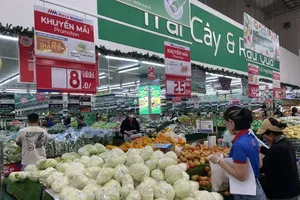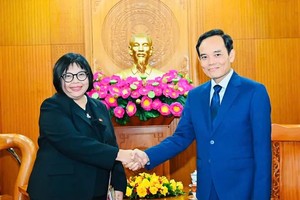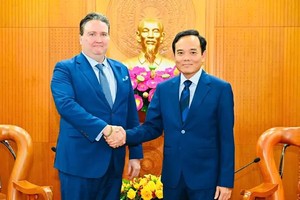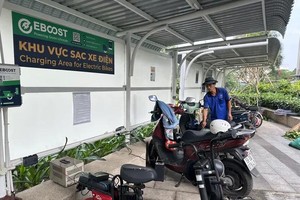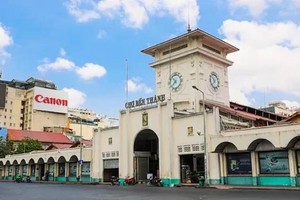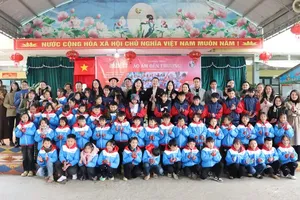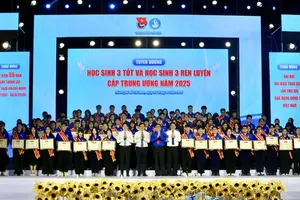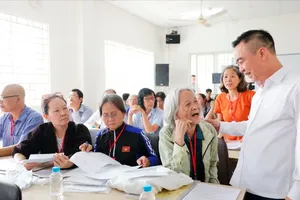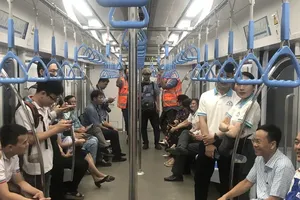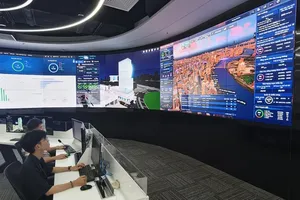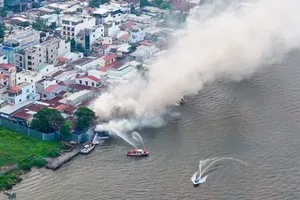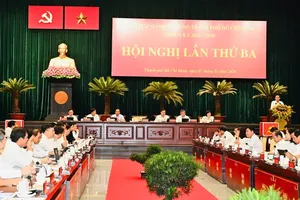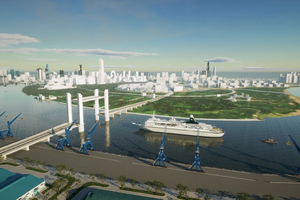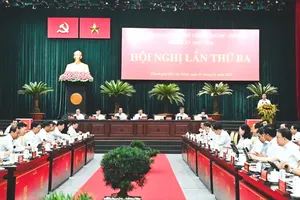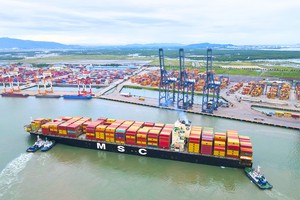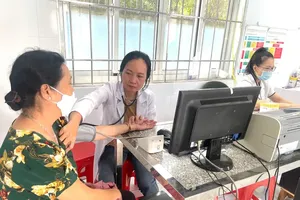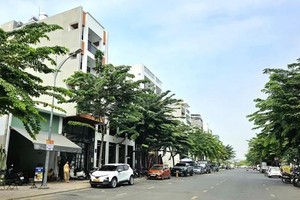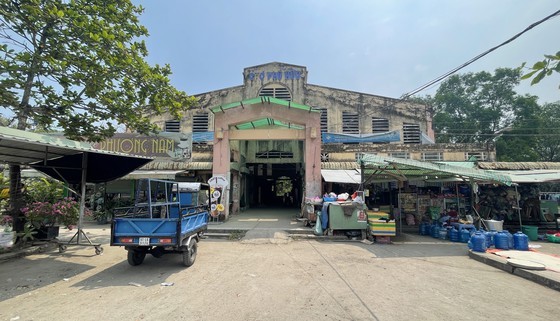
In order for residents to have a better place for commodities sales and to eliminate spontaneous markets, in 2004, HCMC spent VND1.2 billion (US$52,500) to construct Phu Huu Market in Phu Huu Ward of Thu Duc City. The market covers an area of 2,000m2 to accommodate about 160 booths, and was expected to become a bustling place full of trading activities.
In reality, however, the market is nearly abandoned, with only a few sellers displaying their goods (fast food mostly) at the façade. The main reason is its neighborhood has so few residents. Adding to this is the anxiety of people visiting the market as large container trucks frequently circulate the surrounding streets.
Opposite to the nearly desolate landscape above are the neighborhoods of the parallel streets of the North-South Railway in Hiep Binh Chanh Ward. Most roads in these neighborhoods are narrow, with some being able to accommodate only two motorcycles at the same time.
Le Duc Tung, living in Neighborhood No.2 here shared that the whole over-40-hectare area possess only a few 5-meter wide main roads. Smaller ones are from 1-3 meters wide, which are tricky for traffic and unsafe of fire prevention purposes. Worse, certain locations are now abandoned, full of weeds and polluted ponds, damaging the urban aesthetic appeal and causing severe pollution via frequent local urban flooding.
Owing to investment shortage, plenty of construction projects in Thu Duc City have been frozen for many years. For instance, there had been planning in Tam Phu Ward for a new culture-sports park before 2000, yet only in 2008 was the project formally announced in Decision No.1622/2008 on August 20, 2008 by Thu Duc City People’s Committee.
This decision has affected a land lot of nearly 126ha, with the intention to build a playground, a recreational area, a public sports area, an exhibition area, a square, a green space with water, and an artistic garden. However, until now, no construction activity has been done yet, and the lot is fully covered with high weeds. Residents in the neighborhood after finishing their private house construction cannot receive the land use right certificate since their own lots are entangled in the park planning.
Contradict to the inactive status of various building projects in Thu Duc City, land prices are experiencing an unstable period. Many parts of Truong Thanh Ward are still abandoned lots and with public facilities the same those in rural areas, yet the land price here is nearly VND100 million ($4,380) per meter square.
“It seems the administrative upgrade into Thu Duc City is merely to change a name. Not much has been developed, but the land price has become unacceptably high”, said Nguyen Nho Hoang, who is seeking to buy a land lot in the new city.
Sharing the same view is Nguyen Dinh Truc, manager of a real estate business sited in Thu Duc City. He shared that he still cannot see any clear socio-economic improvements, and performing administrative procedures here is still rather complicated with various levels.
“Legal-related trouble has prevented nearly 200 real estate projects in Thu Duc City from being launched. There should be more decentralization to release individuals and businesses from the burden of administrative procedures”, said Truc.
Transforming from a district to a city is an important milestone of any area. Nevertheless, if this is merely a mechanical merger without breakthrough mechanisms and policies, synchronous socio-technical infrastructure investments, and suitable environments for manufacturing, trading activities, Thu Duc City can hardly live up to the expectation.
This tardiness in land exploitation, according to HCMC Real Estates Association, might lead to unwanted impacts: land use taxes and fees are not collected on time, abandoned land lots harm the aesthetic appeal of the area, residents have their land use right negatively affected for decades.
To address the problem, the localities have decided to withdraw permits of certain projects which take a long time to launch. However, it is rather difficult to retrieve land lots, especially those having been compensated by investors themselves, since the law states that the State can only take back land in necessary situations, without mentioning case of delayed projects.
Statistics reveal that among 2,800 current real estate projects in HCMC, 547 have to be canceled due to tardiness in carrying out, 108 projects due to slowness in launching after 3 years, 61 projects approved by HCMC People’s Council to change land use purpose from agriculture due to tardiness in carrying out. After a campaign to thoroughly examining these projects for a more detailed report, a formal decision will be released.
In related news, Phu My Hung Urban Area in the southern part of HCMC has been considered a successful case of urbanization. From a wetland covered with weeds and a weak traffic system, after 15 years, the area has become a modern urban one and is approved by the Construction Ministry as the first model urban area in the nation.
With a green and friendly environment and strong public facilities, a low construction density of 25 percent, Phu My Hung Urban Area has been a boost for the overall residential development of the southern part of HCMC, including Nha Be District and Binh Chanh District.
Other parts in HCMC like District 12, Binh Tan District, Tan Binh District, or Tan Phu District have also witnessed impressive growths because of sufficient and appropriate investments for their urbanization. They have greatly contributed to the general development of HCMC.
